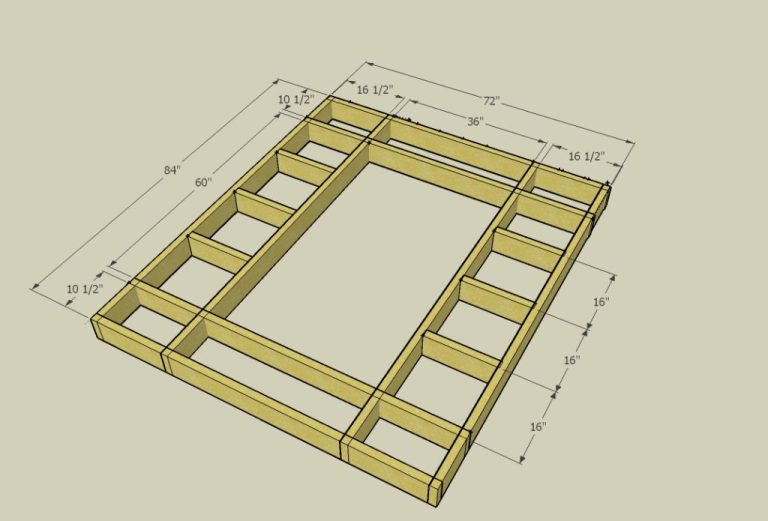Who Invented The First Mug?
A mug is a type of cup often used for drinking hot beverages like coffee, tea, hot chocolate, or soup. Mugs usually have handles, thicker walls, and larger volumes than other cup types. They allow people to comfortably hold hot liquids for longer periods.
The origins of mugs date back thousands of years. Early civilizations fashioned mugs from materials like wood, bone, stone, or clay for convenient drinking. Over time, mug designs evolved with innovations in pottery and porcelain. By the Renaissance era, mugs emerged as a distinct cup type. The earliest known mugs resembling modern versions appeared in the 16th century.
This article will explore the history of mugs starting from ancient times. It will highlight key developments and inventions that led to the familiar mugs we use today. Tracing the mug’s evolution reveals an intriguing story about human ingenuity and how cultures have enjoyed hot drinks throughout history.
Early Origins
Mugs have existed in some form since ancient times. Evidence of early mugs has been found in ancient civilizations like Rome, Greece and China.
In ancient Greece, pottery vessels called kylix were popular for drinking wine. These shallow two-handled bowls on stems were similar to modern mugs. Pottery drinking vessels were also common in ancient Rome and China.
Early mugs were handcrafted from materials like clay, wood, bone and stone. They came in various shapes like cylinders, bowls and tumblers. The earliest mugs had simple designs compared to later ornate styles.
Mugs were utilitarian items used for serving drinks, often alcoholic beverages like beer, wine and tea. Their handle made them easy to hold and prevented spilling. Mugs were a staple of ancient households.
Evidence of early mug use comes from archaeological sites. Paintings and texts also provide insight into mug history. More elaborate mug designs emerged in the Middle Ages and Renaissance era.
Medieval Mugs
During the Middle Ages from the 5th to 15th centuries, mugs evolved with developments in mug making techniques and new materials. Pewter, an alloy of tin and lead, became a popular mug material due to its durability and decorate-ability. Enamelwork, in which powdered glass is fused to metal, allowed for colorful designs. Mug makers experimented with handles, adding a strap handle or ear-shaped lug.
Regional styles emerged in medieval mugs. English mugs featured a tall, cylindrical shape. German mugs had intricate pewter work. Islamic mugs were decorated with enamel floral patterns. Chinese mugs pioneered using porcelain. Japanese mugs displayed unique glazes and elegant, simple designs. Medieval mugs were practical, yet also became an artform showcasing the talents of mug makers of the era.
Renaissance Era
During the Renaissance era from the 14th to 17th century, mugs became more elaborate and were considered luxury items for the aristocracy.[1] Mugs were often made from porcelain, tin-glazed earthenware, or silver.[2] The wealthy used mugs for drinking chocolate, coffee, tea and ale.[1] Handles first began appearing on mugs during this time period.[2] Mugs featured ornate decorations like flowers, coats of arms, and biblical or mythological scenes painted on them.
Wealthy households had collections of mugs for guests to use. Mugs became a symbol of one’s status and were given as gifts between aristocrats.[1] The working class still largely drank from wood or leather vessels, so a porcelain or silver mug was an aspirational item for them.[2]
[1] https://www.amazon.com/renaissance-mugs/s?k=renaissance+mugs
[2] https://greyfoxpottery.com/mug-styles/renaissance-festival-mugs
The First Modern Mug
The first modern mug is credited to Alphonse Bertillon, a French police officer and biometrics researcher who lived from 1853 to 1914. In the late 1800s, Bertillon invented the mug shot while working as a clerk for the Paris Police Prefecture.
Bertillon’s mug shot design featured a frontal portrait photograph of a person’s face as well as a profile view, standardizing the capturing of facial characteristics for identification purposes. This allowed law enforcement to have a photographic record of arrested criminals. Bertillon’s system also involved measuring and cataloging specific body measurements and dimensions.
According to sources:
https://www.wired.com/story/secret-history-facial-recognition/
https://www.timetoast.com/timelines/history-of-photography-1800-1910
Bertillon’s mug shot design with frontal and profile views became the standard for police photography worldwide. His systematic approach and photographic techniques invented specifically for identifying criminals qualifies Bertillon’s mug shot system as the first modern mug design.
Mass Production
The Industrial Revolution in the 18th and 19th centuries led to major advancements in mug manufacturing. Potters wheels and kilns became mechanized, allowing mugs to be mass-produced for the first time. According to the Encyclopedia Britannica, the earliest industrial mugs were made of stoneware or ironstone. In 1813, English potter Charles James Mason patented a process for making low-cost, high-quality ironstone. This helped popularize ironstone mugs among the working classes in England.
In the 1870s, John Dwight and brothers Bennett and John Ford created spongeware mugs decorated with abstract sponge patterns. These were also mass-produced and affordable. In 1897, Red Wing Pottery began using emerging slip casting techniques to mass produce thick, durable stoneware mugs in the United States. Important mug innovations in the early 20th century included custom branding and logo imprinting, popularized by the Osborne Manufacturing Company in the 1930s.
20th Century Styles
The 20th century saw many innovations in mug materials and customization options. Melamine became a popular material for mugs starting in the 1940s. Melamine is a durable plastic that can be molded into different shapes and designs. It was embraced as an inexpensive, unbreakable alternative to ceramic mugs.
Pyrex glass also became a common mug material during the 20th century. Pyrex mugs were appreciated for their heat resistance and clarity for seeing the contents inside. The Pyrex company began producing mugs in bright colors starting in the 1950s.
Custom branding and personalization of mugs took off in the 20th century. Companies started offering mugs with their logos printed on them as promotional items. Individuals could also order custom printed mugs as novelty gifts. The rise of digital printing technologies in the 1990s made it even easier to put any image or text on a mug.
Sources:
https://www.redbubble.com/shop/20th+century+mugs
https://www.teepublic.com/mug/20th-century
Modern Mug Uses
Mugs play an important role in culture and society today. They are a staple in most kitchens and are used daily by millions of people around the world. Mugs provide a convenient vessel for enjoying hot or cold beverages. They have also become an expression of personal style.
Some of the most popular mug styles today include oversized mugs, travel mugs, and novelty or branded mugs. Oversized mugs have grown in popularity and can hold 20 ounces or more of a beverage. These appeal to people who want to minimize refills. Travel mugs with lids allow people to take their beverage on-the-go, providing convenience and preventing spills. Novelty and branded mugs have exploded in popularity, featuring funny sayings, pop culture references, or logos of a person’s favorite sports team, TV show, movie, etc. These mugs allow self-expression.
Mugs are also popular gifts and collectible items. Some people enjoy collecting mugs from places they have traveled or that represent their hobbies and interests. Overall, mugs continue to play an important utilitarian and social role in modern life.
Unique and Novelty Mugs
In recent years, there has been a trend towards more unique and novelty mug designs. Manufacturers are getting creative with different shapes, materials, and features to make mugs that stand out.
One example is luxury mugs made from precious materials like porcelain, bone china, and sterling silver. These are often ornately decorated or feature intricate details like gold leaf accents. Brands like Wedgwood, Royal Doulton, and Tiffany & Co. offer high-end mug lines. A Tiffany sterling silver mug can cost over $500.
There are also novelty mugs in all kinds of crazy shapes like animals, toys, cars, and more. Nuba Home sells handmade ceramic mugs that look like elephants, owls, and other animals. These creative designs make for fun personalized gifts.
Some novelty mugs have features like sound effects, moving parts, or displays. Cut The Shirt offers mugs with LED lights and mugs that look like boomboxes with built-in speakers to play music.
The mug has come a long way from its early days as a simple ceramic beverage holder. Novelty and luxury mugs allow people to make a statement and show off their personality when sipping their morning coffee or tea.
Conclusion
In summary, mugs have a long and storied history dating back thousands of years to ancient civilizations. From crude wooden vessels and animal skulls to beautifully glazed ceramic mugs, the mug has evolved across cultures over time into an indispensable everyday item.
Mugs became more refined and specialized during the Medieval and Renaissance periods. With the advent of coffee, tea, and hot chocolate in Europe, mug design shifted to optimize heat retention. The early modern period ushered in mug mass production, allowing mugs to become ubiquitous. Novelty and customization defined 20th century mugs.
Today, mugs are produced in endless shapes, sizes, materials, and designs. They can reflect personal style, interests, humor, or simple practicality. The mug’s usefulness for holding hot and cold beverages makes it one of the most utilized items across homes and workplaces worldwide. Whether holding coffee, tea, hot cocoa, soup, or a cold drink, the mug remains an essential part of dining culture.
Mugs connect us to history but also to each other in the present. Few items are as casually intimate and frequently used as the mug. Its comfortable and practical familiarity makes it a staple of modern life.




